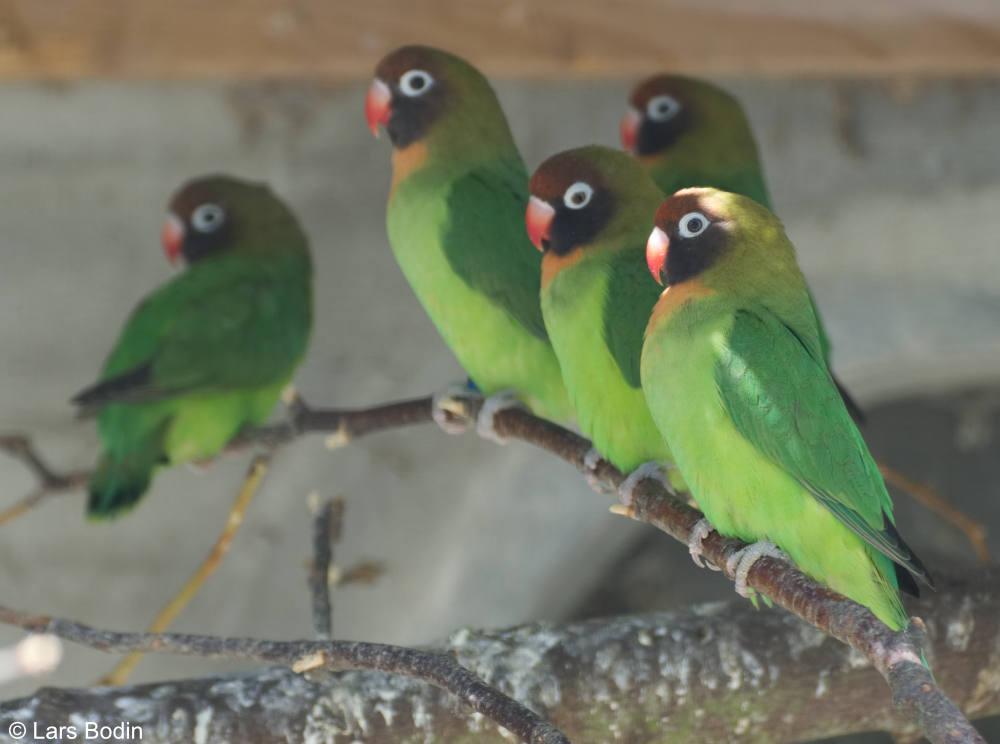Agapornis nigrigenis - Black-cheeked Lovebird
Black-cheeked Lovebird – Agapornis nigrigenis (Sclater, WL, 1906) – is not as noisy as other Lovebirds.
It has a calm temper and can be kept together with other birds.
They are not as good at talking as other parrots, but can learn to say individual words.
They are very social birds and require much attention – if they are not stimulated they may start picking their feathers or get other mental problems. For this reason you should not keep a single pet Lovebird – instead I recommend you have a pair or a small flock in an aviary as this will ensure they get the company and social stimulation this specie require.
According to the IUCN Red List it is Vulnerable because of it has a small population that is declining due to a desiccation of water bodies within its highly localised range. They are listed on CITES Appendix II and EU Annex B.
Description
The plumage is mostly green. The head is reddish-brown on forehead and forecrown and with black cheeks and throat. Orange patch under the beak which turns into yellow-green. White eye ring. The adults have a bright red beak. Grey feet.
Juveniles are similar to the adult birds but the bill is more orange.
Size: 14 cm
Taxonomy
- Order: Psittaciformes
- Family: Psittaculidae
- Genus: Agapornis
Synonyms
- Danish: Sortkindet Dværgpapegøje
- English: Black-cheeked Lovebird, Black-faced Lovebird
- French: Inséparable à joues noires
- German: Erdbeerköpfchen, Rußköpfchen
- Portuguese: Inseparável-de-faces-pretas
- Spanish: Inseparable Cachetón, Inseparable de Cara Negra
- Scientific: Agapornis nigrigenis
IUCN Red List

https://dx.doi.org/10.2305/IUCN.UK.2016-3.RLTS.T22685360A93069915.en
Downloaded on 9 July 2021
Subspecies
None.
Habitat
Africa: Southern Zambia and extreme northern Zimbabwe
The Black-cheeked Lovebird live in the trees along rivers in flocks of up to 20 birds.
They live in a relatively small limited area and is listed as a vulnerable specie (IUCN: VU) due to its natural habitat is in decline.
Diet
Wild birds feed on grass, millet, sorghum, corn, berries, flowers and insect larvae.
Aviculture
Wild birds build nest in hollow threes but may also nest under the roof of buildings.
They are relatively easy to breed in aviculture and are not aggressive to other birds so it is possible to have several breeding paris in the aviary.
Despite being easy to breed they are however not as common in aviculture or as pet.


